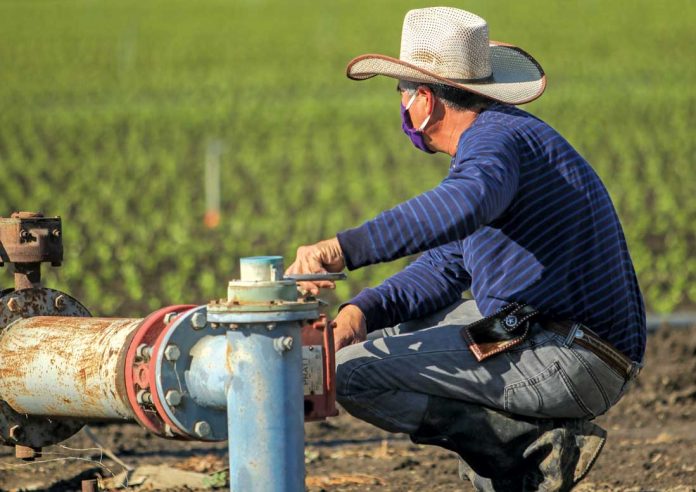
It’s hard to find a job fighting climate change, oddly. But the organic farming industry is one place where a person can make a living making a difference.
Food systems account for 20% to 30% of global greenhouse gas emissions, according to data from the World Bank. The reinvention of farming could impact the future as much as the electric car.
At the Organic Grower Summit last week, organized by Western Growers and the Organic Produce Network, over 600 growers and industry leaders, mostly from California, met in Monterey to share problems, solutions and business cards.
Big topics included new technologies and new government regulations that could raise costs. Underlying almost every discussion was the regenerative health of soil and its potential for fighting disease, repelling pests and capturing carbon.
California leads the country in organic farming, with over 3,000 certified farms, according to 2022 figures from the United States Department of Agriculture, or USDA. In 2021, the state’s organic sales topped $14 billion. That’s the equivalent of $43 per person in the U.S. buying organic. Just in the greater Bay Area region, spanning from Monterey to Sonoma counties, there are over 1,550 organic producers generating nearly $1.4 billion in annual gross sales.
Gradually, more conventional farmers are moving into organics, some transforming their multi-generational farmlands. They bring business experience, innovations and capital to what was once a niche economy.
“I’m in it for the money,” said Carlos Amaral, a grower from San Mateo County who said he is willing to front the higher production cost because the buyer is willing to pay more in return. Today’s younger shoppers, he said, are more environmentally conscious.
But by March 2024, organic prices might rise as new USDA rules for organic certification take effect. The Strengthening Organic Enforcement rule, or SOE, will set new standards for everyone involved in production. All the way up the supply chain—growers, distributors, shippers and importers—will need to be organically certified.
“You’re verifying that they understand how to keep things organic,” said Danny Lee, inspector with the California Department of Food and Agriculture. “You will be sure that they’re not commingling organic produce with non-organic products, which may have different pesticides or other inputs.”
It is going to be more expensive, he said, but whether it gets passed down depends on who is willing to absorb those costs and what the final retailers are willing to pay.
The summit centered on the unique challenges of specialty crops, things like leafy greens, berries and carrots. They are different from commodity crops, like corn and soy, which are farmed at mass scale using herbicide-resistant seeds and industrial harvesting methods.
Specialty crops need a lot of intense hand labor, and synthetic herbicides like Roundup are not allowed on organically certified farms.
“The thing I see that we have oversaturated is the weeding market,” said Bart Walker, who runs an equipment rental company.
Walker was referring to the array of mechanical weeders on display at the summit. Rather than ask labor to do the back-breaking work of pulling weeds by hand, engineers have designed a variety of machines to do it. Pulled by a tractor, whirling paddles, blades and spikes disrupt the ground between crop rows and keep weeds from taking root.
“The thing that I’m excited to see is more lasers,” said Walker.
“It turns out that having people walk through your field and pull weeds out with hoes and tools will damage part of the structure of the plant,” said Paul Mikesell, inventor of the LaserWeeder by Carbon Robotics. “By the time the weed is tall enough for your person to pull it, the root structure is deep enough that it’s disrupting the roots of the crops, too.”
The LaserWeeder uses artificial intelligence to identify weeds when they are just sprouts. At a cost of $1.4 million, it uses flash photography to make thousands of high-resolution images of the ground as it crawls across a field. Onboard computers interpret that image information and send it to robotic mirrors at the back of the machine, which swivel to direct a laser beam. Weeds are zapped in a puff of smoke.
“It’s not tearing at the topsoil, not damaging to the ecosystem and it’s also good for the environment,” said Mikesell.
For centuries, farmers plowed fields between seasons, but now they are told to use a tender touch. Exposing topsoil to the air releases trapped carbon. The sunlight burns important nutrients and good fungi that organic farmers use to fight pests and disease. Capturing carbon is a new role for farmers, as evidenced by two awards presented at the summit—an Ag Shark innovator award and Grower of the Year.
Jason Aramburu is the founder of Climate Robotics and inventor of a small mobile biochar incinerator. Picture a pottery kiln on wheels. It can be moved around a processing plant or pulled behind a tractor. It digests waste, like corn stalks, wheat, straw and nut shells, and deposits biochar right there onto the ground.
“Biochar is a very pure form of charcoal made from agricultural waste that we burn at a very high temperature and apply back into the soil,” Aramburu said upon receiving his Ag Shark investment award. He cited university studies that showed biochar can result in 16% more plant production compared to fields without biochar. It has increased soil water retention by 51% and fertilizer retention by 95%, he said.
“If we do this on a large enough scale, studies indicate we can sequester about 2 billion tons of CO2 annually into the soils of our farms,” Aramburu said.
The USDA is offering about $2,000 per acre per season to growers who apply biochar to their soil.
“Agriculture is seen as the second leading industry producing CO2, right behind fossil fuels,” said Rod Braga of Braga Fresh Farms, upon accepting the Organic Grower of the Year Award.
“The pressures are really coming from the top down,” he said about the push for farming to adopt conservation measures. “I don’t mean retailers. I mean the United Nations, the World Economic Forum, the European Union.”
Braga talked about ways agriculture has tried to be carbon neutral—using less diesel fuel, planting one crop over the other rather than tilling, and investing in carbon sequestration elsewhere to offset the carbon generated on farms at home.
“Now, they’re talking net zero,” he said, referring to the theory of an economy that emits no more greenhouse gasses than are permanently removed and stored.
“How do we farm getting to zero without cutting crops and starving millions? We can do carbon capture while farming,” Braga said. “We’re still growing vegetables and other crops. We need to be the answer. More farming acres is what we will need in the world and not less.”
Copyright © 2023 Bay City News, Inc.







